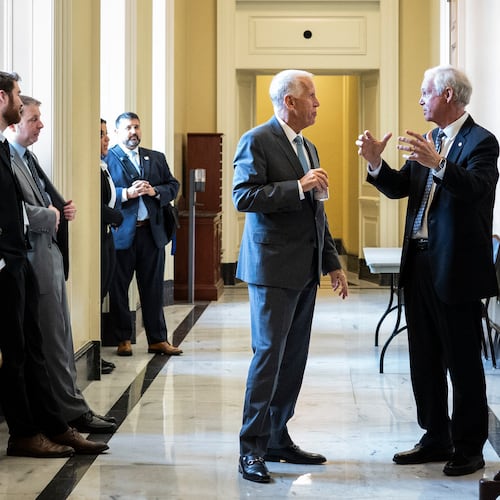Government is a creature of numbers and statistics, a generator of such vast quantities of data and reports that it’s hard to appreciate sometimes the full human dimension of what it takes to protect everyone from vaccine-preventable diseases.
That reality comes to mind as this year’s World Immunization Week arrives, marking fifty years since the United States launched an ambitious global immunization effort. The anniversary is a major milestone in our efforts to protect and improve people’s health around the world.
This anniversary, together with World Immunization Week, is the perfect moment to reflect on the remarkable progress that’s been made to protect people in the United States and around the world from vaccine-preventable diseases such as measles and polio. But we must also acknowledge the distance that remains to ensure that everyone, everywhere, has access to life saving vaccines.
What’s been accomplished to date by the U.S. Centers for Disease Control and Prevention and partners ranging from ministries of health, universities, other U.S. agencies, international organizations such as the World Health Organization, and non-profits like Rotary International and Gates Foundation, among others, is impressive. There are plenty of facts that tell the story.
Here are a few.
Smallpox has been eradicated.
Measles, though still one of the leading causes of death in children child outside of the United States, is down 90 percent globally.
The number of polio cases worldwide has been slashed by 99.9 percent. Africa has been free of wild poliovirus for over a year. The legacy of that work has a larger echo too, one that radiates additional benefits. The healthcare infrastructure that’s been so meticulously constructed over the last few decades, for example, is being used to provide maternal and child health care, and to detect and respond to outbreaks of diseases such as Ebola and Yellow Fever.
Even better, we can use the tools and systems, lessons learned, and practices from our work to defeat polio to protect people – especially children – from diseases like measles and rubella. The "machinery" and trained workforce of our polio immunization efforts have also provided a crucial head start on our efforts to fulfill the promise of the Global Health Security Agenda by strengthening public health laboratories and infectious disease surveillance. The Global Health Security Agenda is also improving the ability to generate, interpret, and use surveillance data to detect and respond to outbreaks.
Highlighting these achievements is important because without them, it’s all too easy to forget the astonishing successes we’ve realized with something so simple and unambiguous as giving a child a vaccine. We wouldn’t know that the world today has the fewest wild polio cases in the fewest places – ever. Afghanistan and Pakistan are the last remaining holdouts for wild polio with those two countries accounting for all 11 cases this year.
It wasn’t that long ago – 1988 in fact – when there were more than 350,000 cases of wild polio each year worldwide. Now there are 11 confined to only two countries. It’s the reason that in much of the world and especially the United States, people aged 50 and younger have almost no concept of a disease once so dreaded it once ranked only behind nuclear war as a prevailing public threat. In fact, most physicians working today in the United States will never treat a case of polio.
That’s the goal – a world where the memory of vaccine-preventable diseases is vague and fading.
Although much hard work remains, we are informed and emboldened by history. A key part of that effort is CDC's updated action plan, called the Strategic Framework for Global Immunization, 2016-2020.
The plan builds on and refines our work, and it articulates CDC’s vision of a world populated with healthy people protected from vaccine-preventable disease, disability, and death. At its core, the updated strategy focuses on eradicating polio using the tools and practices and expertise from that effort towards achieving a world free of vaccine preventable diseases, including measles and rubella.
That means CDC will continue working closely with governments and ministries of health in countries where disease takes a heavy toll and where immunization systems have gaps. Working together with governments, CDC will do what it has been doing since its founding in 1946 – making available its highly trained experts, its networks of laboratories and public health training programs to help eliminate disease where it is stubbornly entrenched.
At the same time, CDC will continue to conduct research and share best practices to ensure governments can detect and respond to infectious disease threats before they become national, regional or international crises.
Can it be done? Yes.
Will it be easy? No.
This year we are building on our role as the lead of the global polio oversight board to focus efforts at transitioning the resources of polio to end other childhood disease like measles. We all have a stake in this effort. And we are guided by what we’ve achieved so far, the indisputable need of what’s left to be done, and the understanding that CDC, working arm-in-arm with ministries of health and an array of other partners, won’t stop until the job is finished.
About the Author
Keep Reading
The Latest
Featured


